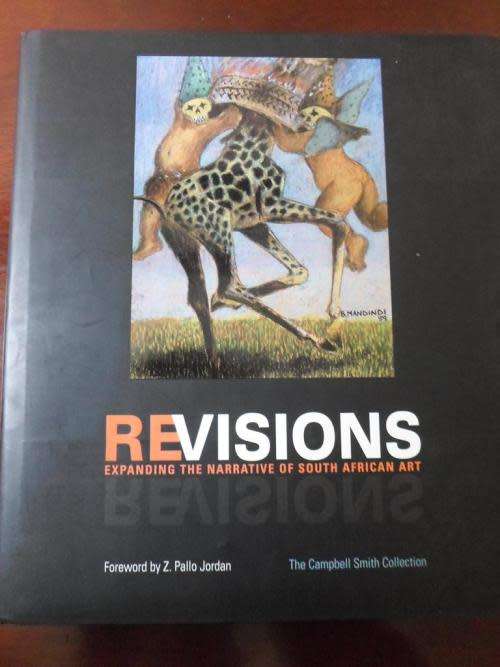
REVISIONS - EXPANDING THE NARRATIVE OF SOUTH AFRICAN ART, FIRST EDITION 2006
Check my rate
| Main centres: | 1-3 business days |
| Regional areas: | 3-4 business days |
| Remote areas: | 3-5 business days |

| Main centres: | 1-3 business days |
| Regional areas: | 3-4 business days |
| Remote areas: | 3-5 business days |
REVISIONS - EXPANDING THE NARRATIVE OF SOUTH AFRICAN ART, FIRST EDITION 2006 SA History Online & UNISA Press, 2006. Large hard cover with dust cover. 360 pages. Very good condition: tightly bound.
The Bruce Campbell Smith collection contains an array of South African art from the 1920s to present day, which focuses particularly on the works of the emerging modern black artists of the mid to late 20th Century. As one of the biggest private art collections in the country, Campbell Smiths holdings provide this countrys most comprehensive and valuable database of artists that suffered from systematic neglect during the apartheid era. This website makes this collection available to teachers and pupils and the wider public as an archival resource, and promises to become one of the most valuable tools for the democratisation and re-evaluation of the South African art canon. The digital reproductions of the works on this database are of an exceptionally fine quality and will not only enable students and teachers of South African art history to view high resolution images, but also to obtain information about their historical context as well as biographic information on the artists who produced them.
Generally black artists were excluded from the emerging canon of South African art because their traditional practices were regarded as of purely ethnographic interest, and hence not as art at all. Yet, from the 1920s onwards, increasing numbers of black artists were choosing to adopt a modern idiom, or working in materials and formats generally regarded as Western. Bruce Campbell Smith was intent on collecting works from across the country, from artists emanating from rural and urban contexts, whose works reveal the complex transitions and the painful realities of lives lived outside structures of power. The overwhelmingly white art establishment consistently marginalised these artists, excluding them from higher education, from exhibition opportunities and from national art collections. Art historical writings tend to pay lip service to some of them, but reduced their work to curiosities or patronised them as the product of innately primitive and childlike beings.
Bruce Campbell Smiths lifelong and near-obsessive dedication to this collection, often at the expense of his own material welfare, must be regarded as an act of faith that now stands to benefit all South Africans. It is trusted that this amazing collection will enrich South African art historical practice as more and more pupils and teachers engage with South Africas rich, forgotten legacy. It is also hoped that this database will inspire established art historians to take up the challenge of rewriting South Africas art history with the complexity and nuance it deserves.
